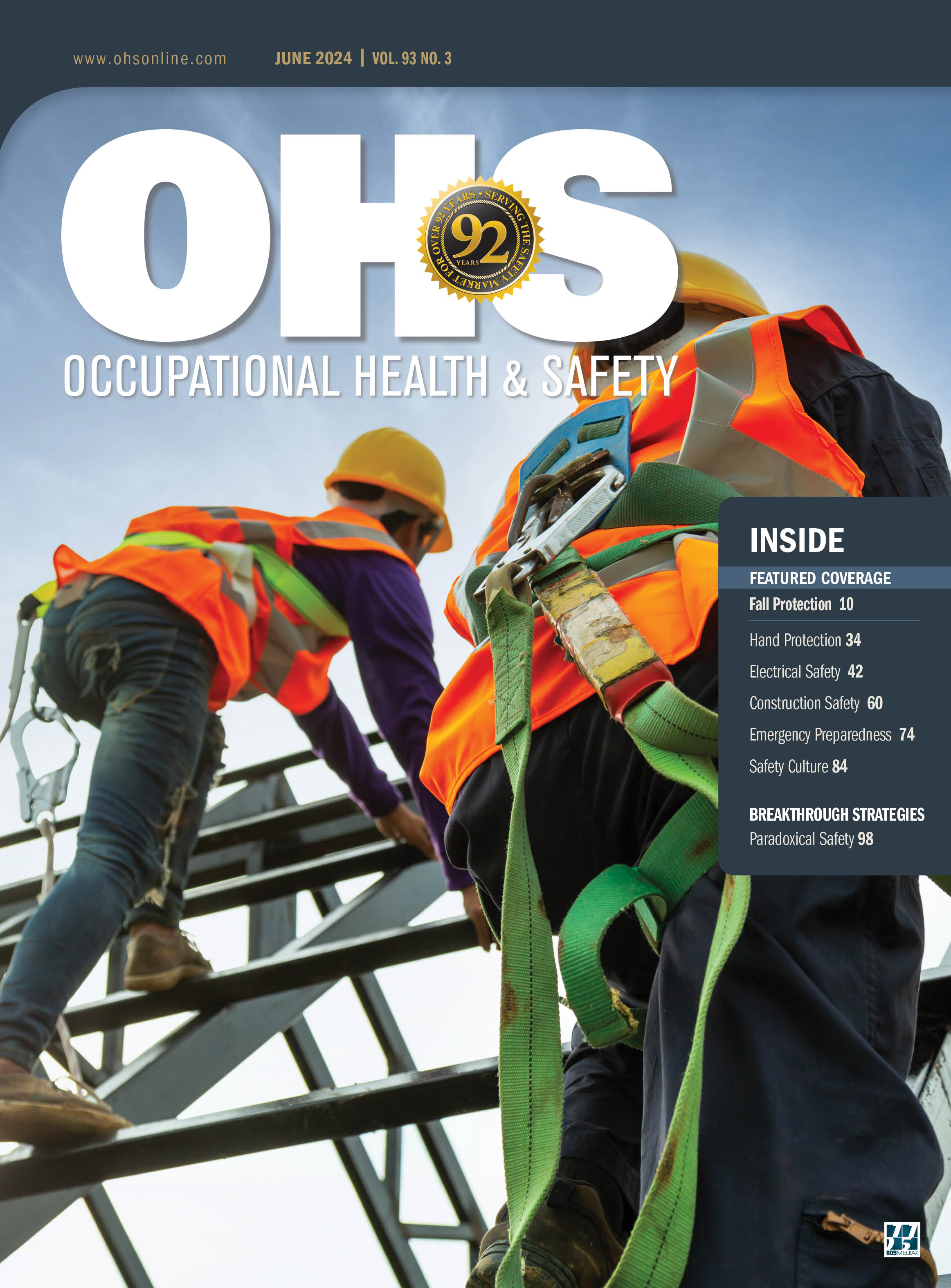
June 2024
Find these topics and more in the June issue:
- Fall Protection
- IH: Confined Spaces
- Respiratory Protection
- PPE: Hand Protection
- Electrical Safety
- Training
- Emergency Showers & Eyewash
- Construction Safety
- Employee Health Screening
- Workplace Safety Technology
- Emergency Preparedness
- Facility Safety
- Sustainability
- Safety Culture
- Total Worker Health
CLICK HERE TO SUBSCRIBE.
Cover Story

By Daniel Huntington
Staying ahead of the curve requires proactive assessments and enhancements in fall protection.
Features
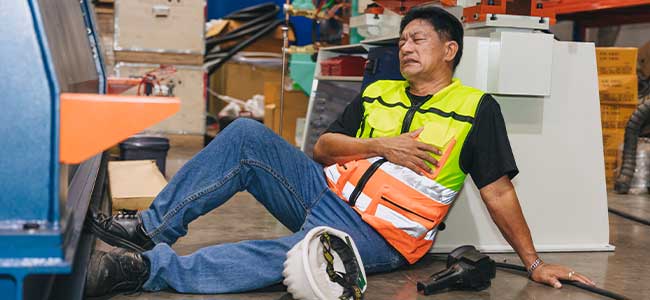
By Ian Durrant
Understanding the crucial role that AEDs play in workplace emergency preparedness.
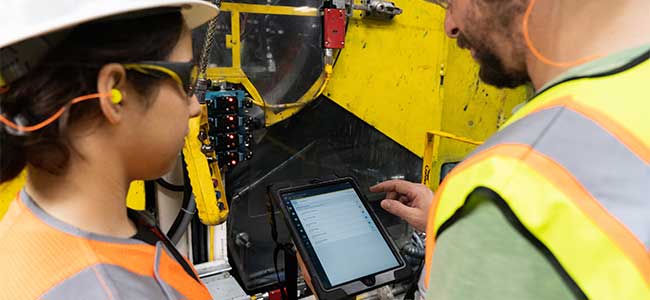
By Holly Mockus
Like everything, safety starts with using the right tools. Here’s how to leverage simple, but powerful training apps.
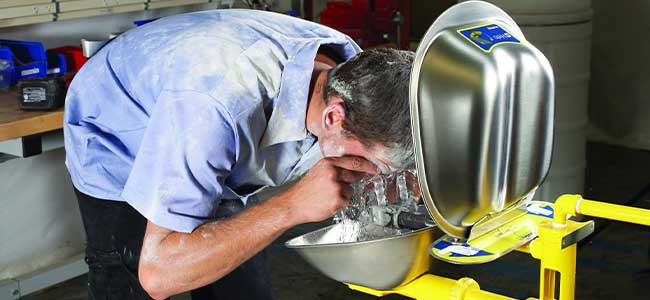
By Ryan Pfund
User-friendly features in eyewashes and emergency fixtures make all the difference.

By Taylor Thorn
Hiring third parties in construction can pose risks in construction, but with a clear strategy in place, those risks can be managed.
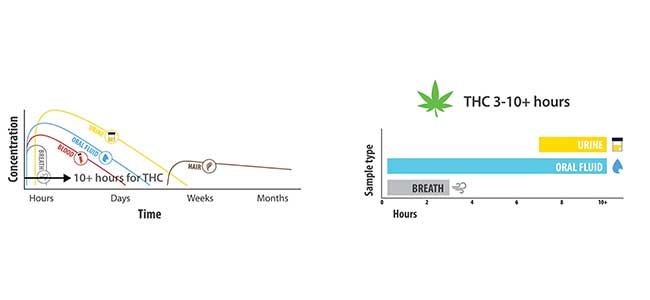
By Katherine Miller
How evolving cannabis laws are impacting workplace safety protocols and why maintaining and updating rigorous drug testing remains essential for employers across various industries.

By Zack Braun
Modernizing safety protocols involves integrating technology into EHS management.
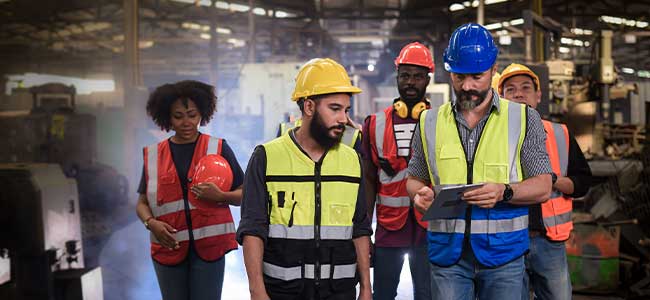
By David Kopf
How using SMART goals can help drive safety training success.

By Rachel Krubsack
Employees must be trained on the hazardous chemicals in their work area. What do employers need to know to comply with standards and protect their employees effectively?

By Xavier Alcaraz
The NFPA 70E Technical Committee has published its 2024 revisions to the standard, prioritizing safety and adaptability over mere compliance

By Raghu Chakkravarthy, Ian Lanpher
What is glove gauge, and how does it affect hand safety and performance?

By Patrick Icasas
Choosing task-specific, properly fitting PPE is essential for worker safety, productivity and cost-effectiveness.

By Sylvia Fontes
Choosing the right supplied air respirator involves understanding specific hazards, regulatory requirements, and ensuring proper fit and comfort to maintain worker safety in toxic environments.
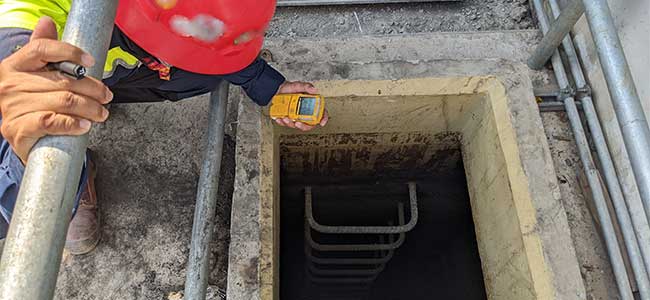
By Dante Moore
Effective gas detection and a comprehensive confined space entry plan are crucial for ensuring worker safety and preventing fatalities in hazardous environments.

By Philip Jacklin
Fall protection and awareness of suspension trauma are essential for ensuring workplace safety, as proper equipment use and effective rescue plans can prevent injuries and save lives.
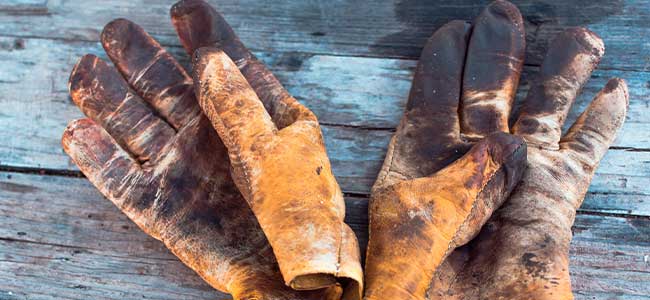
By Rodney Taylor
Investors and stakeholders increasingly emphasize the importance of environmental, social and governance metrics to drive corporate sustainability and ethical business practices.

By Mia Barnes
The climate crisis significantly endangers worker health and safety across various industries, necessitating immediate adaptation strategies and legislative support.

By Jared Anderson
Construction safety culture can transform by prioritizing leadership, employee engagement and proactive measures beyond traditional rules and procedures.

By Jeff Stay
Here’s why what happens in the field shouldn’t stay in the field.

By Beemal Vasani
Despite advancements, workplace safety remains secondary in many firms, highlighting the need for a cultural shift and dedicated roles to prioritize it based on historical and research insights.

By Pat Overson
Roofing is one of America's most dangerous professions, necessitating enhanced safety measures to reduce the annual fatalities and accidents.

By Gen Handley
Occupational falls—often underestimated and primarily occurring at lower levels—have become the second-leading cause of worker deaths, necessitating a tailored and comprehensive approach to safety hazard mitigation across all industries.

By Nicole James
For site leadership, combatting burnout means meeting the unique needs of off-shift workers through programs and initiatives that support their whole health and wellness.
Departments
By Robert Pater
Soft-tissue injuries are prevalent, persistent and pernicious, and result in significant direct costs and pain and lost productivity, as well as hampered workflow.
By David Kopf
An ASSP effort compiles worthwhile insights from safety’s collective expertise.